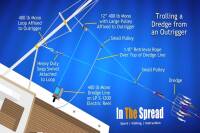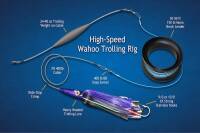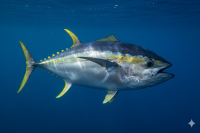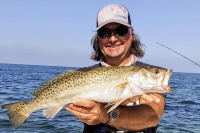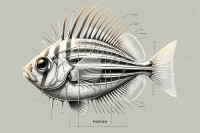Successful red snapper fishing requires matching your bait to depth, target size, and conditions. Pinfish and pogies dominate for trophy fish, bonito strips excel in deep water, and vertical jigs avoid bait stealers. Learn proven techniques from Gulf and Atlantic charter captains for consistent catches on oil rigs, artificial reefs, and deep ledges.
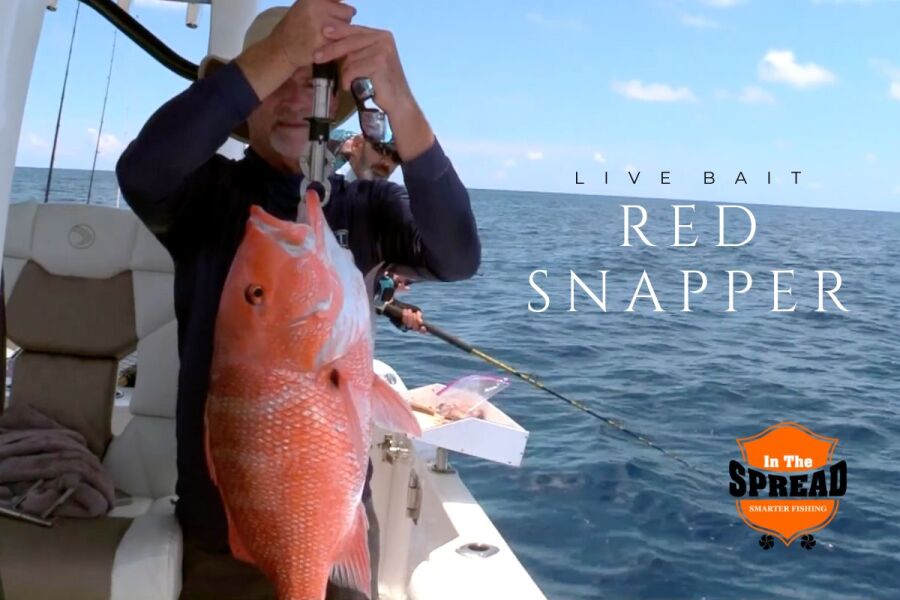
Best Bait for Red Snapper: Live, Cut & Artificial
The Complete Guide to Choosing the Best Bait for Red Snapper Fishing
What Is the Best Live Bait for Red Snapper?
Pinfish are the most versatile live bait for red snapper fishing because they're hardy, readily available year-round, and snapper love them. But pogies, hardtails, and cigar minnows can all outperform pinfish in specific situations.
Why Live Bait Works for Trophy Red Snapper
The biggest red snapper caught each season almost always fall for live bait. Natural movement, scent trails, and vibrations trigger red snapper's predatory instincts like nothing else. I've watched it on the fishfinder countless times: drop a fresh live bait to structure, and within seconds fish move toward it from 50 feet away.
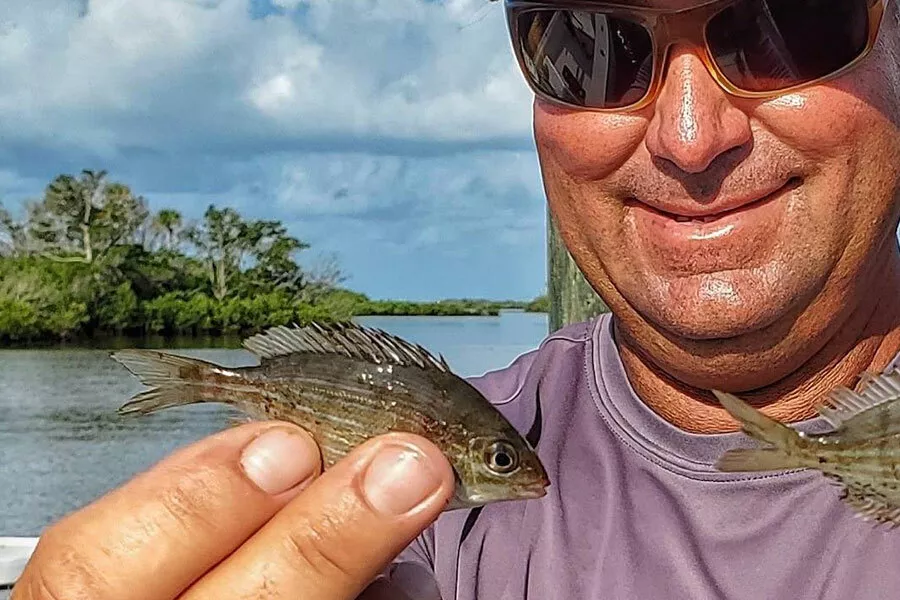
Pinfish: The Go-To Live Bait
Pinfish survive incredibly well in livewells, they're available around grass flats everywhere red snapper swim, and they represent natural prey. Here's how to rig them:
- Use 5/0 to 8/0 circle hooks (6/0 or 7/0 for most situations)
- Attach 40 to 80 pound fluorocarbon or monofilament leader
- Hook through the back behind the dorsal fin for natural swimming
- Hook through both lips when trolling or fishing in current

Pogies (Menhaden): Maximum Scent Production
Hardtails (Blue Runners): Best for Trophy Targeting
Cigar Minnows: Deep Water Specialists
For red snapper fishing deeper than 100 feet, cigar minnows excel. Rig them live or frozen. Hook live ones through the nose. For frozen, pass the hook through the eyes and then through the back. Use 6/0 to 8/0 circle hooks with 40 to 60 pound fluorocarbon leaders. Weight ranges from 2 to 8 ounces depending on current and depth.
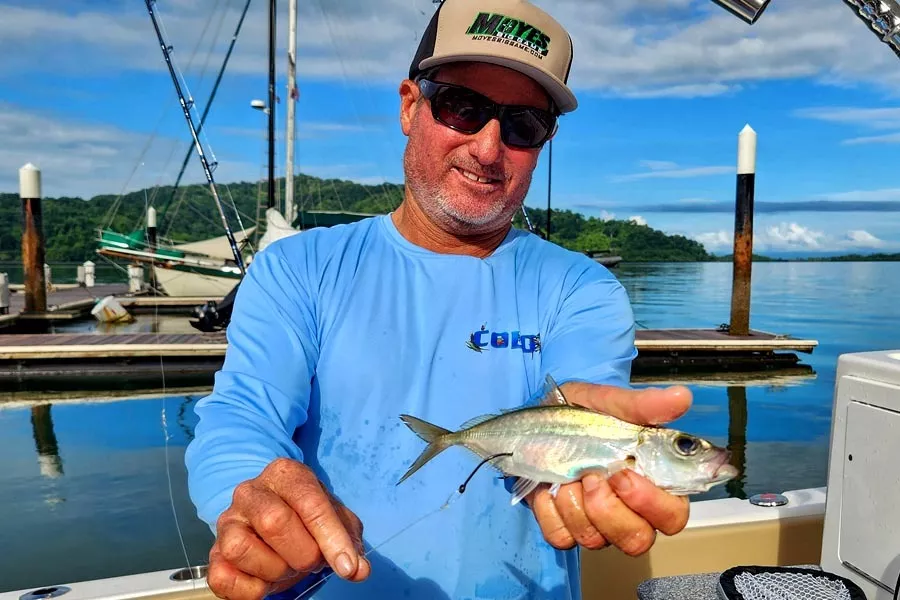
Other Effective Live Baits
Additional options include ruby red lips (tomtates) for their vibrant color, threadfin herring (favored by Atlantic Coast captains), and goggle-eyes (bigeye scad) for deep water trophy fishing in 200 to 300 feet.
Circle Hook Regulations
Federal waters and Florida state waters require non-stainless steel, non-offset circle hooks when using natural bait for reef fish. Never jerk to set the hook. Let the fish eat completely, then apply steady pressure and start reeling. The circle hook sets itself in the corner of the mouth.
What is the best all-around live bait for red snapper?
Pinfish. They're hardy, available year-round, and consistently produce in depths from 60 to 200 feet.
How do you keep pogies alive?
Maintain 10 to 15 gallons per minute circulation, provide aeration, keep water cool, and avoid overcrowding. Use same day for best results.
What size hooks for live bait?
Use 5/0 to 8/0 for average snapper, 10/0 to 14/0 for trophy fish over 20 pounds.
How Do You Use Cut Bait for Red Snapper?
Cut bait is extremely effective for red snapper because it provides excellent scent dispersal, exceptional durability, and year-round availability. Cut bait shines in deep water where live bait often dies during descent and when you need durability through multiple drops.
Why Cut Bait Sometimes Outperforms Live Bait
Years ago, I was fishing a wreck in 180 feet. Our livewell was full of hardtails, but we were just not getting bites. My buddy switched to a bonito strip and within 20 minutes had three nice snapper. That's when it clicked: in deep water or with repeated drops, cut bait's durability and scent can outperform live bait.
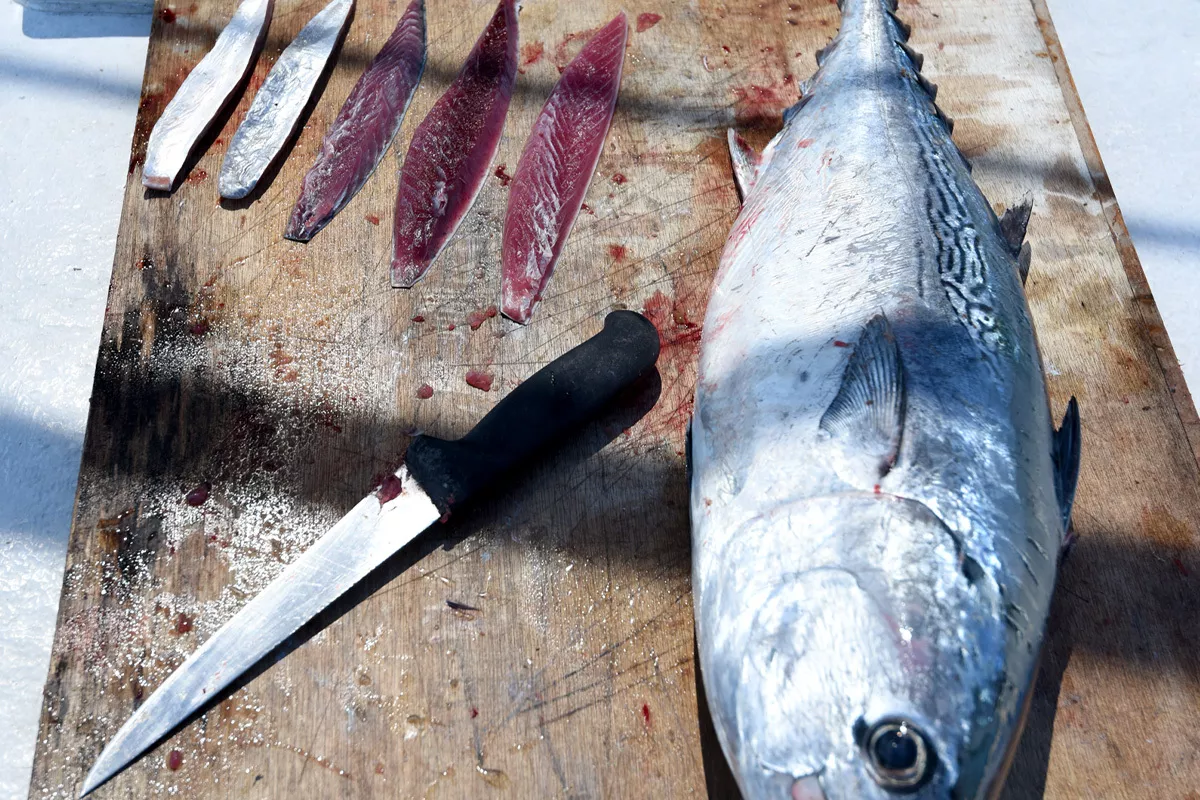
Bonito Strips: The Top Cut Bait Choice
Squid: Maximum Durability
Squid is unbeatable for toughness. You can fish the same piece through 5 or 6 drops. Cut whole squid into 4 to 6 inch strips or use whole heads. Thread hooks through the thickest part. Use 4/0 to 8/0 circle hooks. Fresh or frozen both work, making this an ideal year-round option available at any bait shop.
Pogies as Cut Bait
Pogies excel as cut bait too. Cut into baseball-sized chunks for extensive scent trails. They're particularly effective for chumming: throw handfuls of 1-inch pieces every 5 minutes to draw snapper up from 150 to 200+ feet. The butterflying technique (filleting both sides halfway while leaving them attached at the tail) creates undulating action.
Boston Mackerel for Trophy Fish
Whole Boston mackerel is favored by Atlantic Coast captains for trophy targeting. Insert an 11/0 circle hook through the bottom of the mouth and out the top so the hook point sits even with the eye sockets. Cut off the tail to prevent rudder effect. This presentation selectively attracts bigger snapper.
Rigging and Weight Selection
Cut bait uses the same three systems as live bait: knocker rig (most popular), three-way swivel rig (rocky bottoms), and Carolina rig (finicky fish with 8 to 15 foot leaders). Use the smallest weight maintaining bottom contact: 2 to 4 ounces in shallow water, 4 to 6 ounces at medium depths, 6 to 8 ounces or more in deep water with current.
When Cut Bait Excels
- Deep water fishing (over 150 feet) where live bait dies on descent
- Need for durability through multiple drops
- Limited bait availability (frozen options always work)
- Trophy targeting with size-selective chunks
- Cost effectiveness (frozen bait lasts all day)
What is the best cut bait in the Gulf?
Bonito strips due to their oiliness, durability, and proven track record. Squid is the best budget alternative.
Does frozen bait work?
Yes. Squid, bonito strips, cigar minnows, and Boston mackerel all fish effectively frozen. In deep water, frozen can outperform live bait.
How do you cut bonito strips?
Fillet behind the pectoral fin to tail, trim to 0.25 inch thickness (keep skin), cut 6 to 10 inch teardrop strips, and cut with the grain.
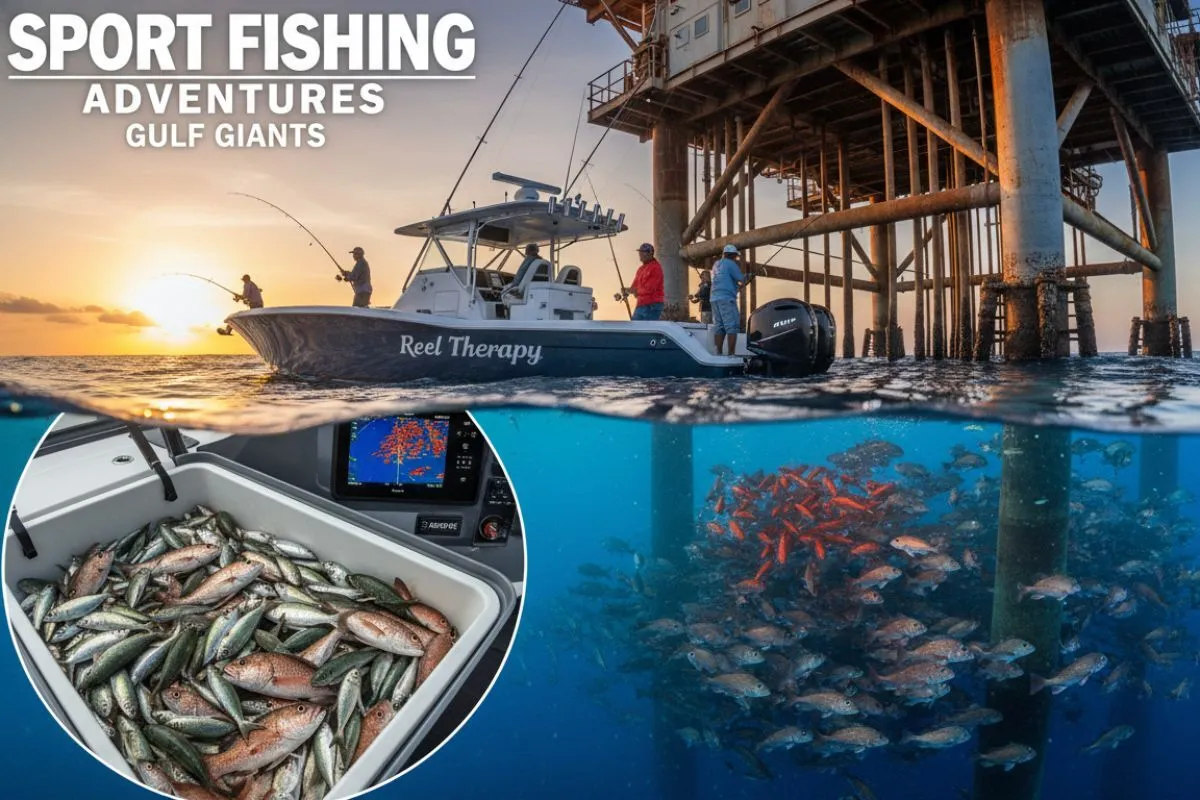
What Are the Best Artificial Lures for Red Snapper?
Vertical jigs in pink or gold colors (6 to 8 ounces) are the most effective artificial lures for red snapper. They efficiently cover water, avoid bait stealers, and selectively target larger fish. While artificials typically produce fewer total fish than natural bait, they excel at catching bigger specimens.
Why Artificials Work
Artificial lures allow you to cover water quickly, avoid small bait stealers (6-inch triggerfish can't engulf a 7-ounce jig), selectively attract larger aggressive snapper, and reach bottom faster in heavy current or deep water. The tradeoff? Fewer total fish, but better size when you're after trophies over numbers.
Vertical Speed Jigging
Best Jig Colors
Pink reigns as the universal top color across Gulf and Atlantic waters, imitating shrimp (60 to 70 percent of red snapper's diet). Other proven colors:
- Red and white (classic Snapper Slapper pattern)
- Gold and yellow (imitates cigar minnows)
- White (clear water)
- Blue and silver (deeper water, imitates sardines)
- Nuclear chicken (chartreuse and orange for low light)
- Glow and UV-enhanced (deep water over 200 feet or night)
Jigging Technique
Drop the jig maintaining slight tension (bites often occur on descent). When it hits bottom, immediately reel up 5 to 10 cranks. Execute sharp upward rod lifts of 1 to 2 feet, then reel 3 to 5 turns while lowering. For bottom-hugging big fish, slow down with deliberate 2 to 3 foot lifts and flutter-down pauses.
Slow-Pitch Jigging for Trophies
Slow-pitch jigging consistently produces bigger fish in pressured Atlantic Coast deep water (200 to 400+ feet). This technique requires specialized rods rated for 100 to 400 gram jigs. Use short, slow lifts (6 to 12 inches) followed by controlled flutter. OTI Jitterbel, Smith Side Thruster, and JYG Deep Collection jigs excel. Use very light drag (10 to 12 pounds maximum).
Snapper Slapper and Soft Plastics
The Snapper Slapper is a legendary Gulf lure (phosphorescent squid-head with planing wings, nylon skirt, stinger hook). The 7 ounce red and white model works great, especially tipped with squid strips or sardines. Note: the original manufacturer sold the brand; Mike's Lures Snapper Killers offer improved alternatives with Gamakatsu hooks.
When to Use Artificials
Artificials excel when targeting bigger fish specifically, in heavy current, during aggressive feeding periods, avoiding bait stealers, and in deep water. However, live and cut bait outperform during slow bites and on heavily pressured structures.
The Hybrid Approach
The most successful anglers use a hybrid approach: bucktail jigs tipped with squid strips, Snapper Slappers with sardines, or soft plastics with Gulp! spray. This combines artificial action with natural scent. Regulations allow J-hooks (rather than requiring circle hooks) when tipping jigs with bait.
What is the best artificial lure?
Vertical jigs in 6 to 8 ounces with pink coloration. Shimano Butterfly Jigs are the gold standard.
Do red snapper hit artificial lures?
Yes. While catching fewer total fish than natural bait, artificials selectively target larger specimens and work great in heavy current.
What color jigs work best?
Pink is the universal top color. Red and white, gold, and glow colors also produce consistently.
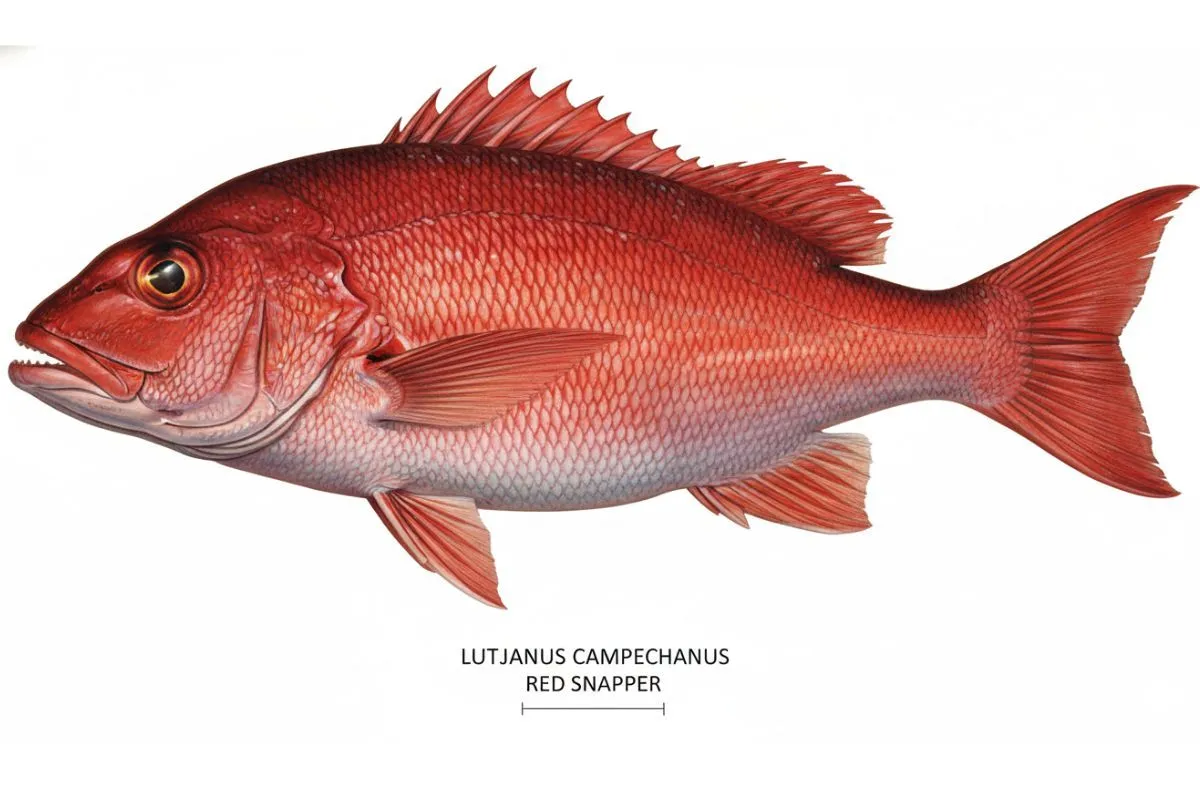
How Does Red Snapper Fishing Differ Between Gulf and Atlantic?
Gulf of Mexico red snapper fishing features generous seasons (100+ days), abundant shallow structure (60 to 200 feet), and healthy populations. Atlantic Coast fishing involves strict regulations (1 to 2 day federal seasons), deeper water (90 to 400 feet), and requires more finesse techniques.
Gulf of Mexico Characteristics
The Gulf offers some of the world's best red snapper fishing. The population is healthy (not overfished), most Gulf states offer 100+ day seasons annually, and abundant structure exists within 6 to 60 miles of shore. Alabama alone deployed over 20,000 artificial structures.
Atlantic Coast Characteristics
Regional Strategy Differences
Gulf anglers enjoy regular opportunities allowing experimentation with baits and techniques. Atlantic anglers face extreme time pressure requiring precise planning and proven techniques. Despite limited opportunities, Atlantic populations have recovered so well that captains report snapper spreading into both shallower (50 feet) and deeper (600 feet) waters than historically documented.
Is fishing better in the Gulf or Atlantic?
Gulf offers better access with longer seasons (100+ days vs 1 to 2 days), shallower fishing, and more abundant structure. However, Atlantic populations are extremely healthy with trophy fish common in deeper water.
What is red snapper season in the Gulf?
Gulf states manage their own seasons, typically running 100+ days from late spring through fall. Check current state regulations.
What is Atlantic Coast season?
Federal Atlantic waters have 1 to 2 days per year. Some states offer additional state-water seasons. Always check current regulations.

When Is the Best Time to Catch Red Snapper?
Summer (June through August) is the best time to catch red snapper because all live baits reach maximum availability, snapper feed aggressively during spawning season, water temperatures optimize activity, and federal seasons are typically open.
Summer: Peak Season
Fall Fishing
Spring Pre-Spawn
Winter Challenges

Moon Phase Impact
Moon phases significantly impact feeding patterns. The three days before a full moon typically produce excellent bites. The three days after show slower fishing as snapper become satiated from overnight feeding during bright full moon nights. New moon periods also produce well because fish must feed more actively during daylight.
Seasonal Chumming
Summer's clear, warm water allows chum slicks to draw fish up from 150 to 200+ feet effectively. Cooler months with reduced water clarity diminish chumming success, requiring bottom presentations with fresh cut bait.
What month is best?
June, July, and August because fish spawn and feed aggressively, all baits are available, weather is stable, and seasons are usually open.
Can you catch red snapper in winter?
Yes, but it's more challenging. Snapper move deeper, become less active in cooler water, and bait availability drops. Texas state waters remain open year-round.
Does moon phase matter?
Yes. The three days before a full moon produce the best action. The three days after often show slower fishing.
What Techniques Separate Successful Red Snapper Anglers?
Successful red snapper fishing requires using the smallest weight possible to reach bottom, applying maximum pressure in the first 30 seconds of the fight, and using proper-sized circle hooks (5/0 to 8/0 for average fish, 10/0 to 14/0 for trophies) with heavy leaders (60 to 150 pounds).
Hook Selection
Circle hooks are required in most jurisdictions (non-stainless steel, non-offset designs in federal and Florida state waters). Size appropriately:
- 5/0 to 7/0 for average snapper (5 to 15 pounds)
- 6/0 to 8/0 for standard mixed bag fishing
- 10/0 to 14/0 when trophy targeting (20+ pounds)
Leader Strength
Leader strength is absolutely critical. Red snapper aggressively pull toward structure when hooked, and too-light leaders result in immediate break-offs.
- 40 to 60 pounds for average snapper in open water
- 60 to 80 pounds for standard bottom fishing around structure
- 100 to 150 pounds for trophy hunting or deep structure in 200+ feet
The Critical First 30 Seconds
Livewell Management
- Maintain strong circulation (10 to 15 gallons per minute)
- Provide supplemental aeration for long runs
- Keep water cool with gradual temperature changes
- Avoid overcrowding
Descending Devices
What pound test line?
Use 60 to 80-pound braid for Gulf fishing around structure, or 40 to 60-pound braid for Atlantic deep water. Always use 60 to 150-pound leaders.
Do you need a descending device?
Yes, legally required in federal waters and most Gulf state waters. Essential for conservation, dramatically improving survival rates.
What is the best rod and reel?
Medium-heavy to heavy conventional rods (30 to 80-pound class) paired with conventional reels with at least 6.3:1 gear ratio.
Your Red Snapper Bait Strategy
The Adaptability Advantage
Final Tips
Understanding that big snapper often suspend 30 to 80 feet above structure (not on bottom) changes your entire approach to weight selection and bait presentation. Fresh bait vastly outperforms old or frozen options when both are available, so invest time in bait acquisition. Be mentally prepared to apply maximum pressure immediately on hookup.

